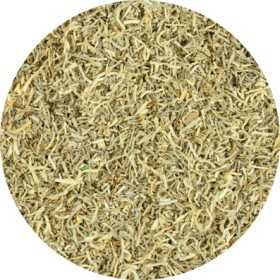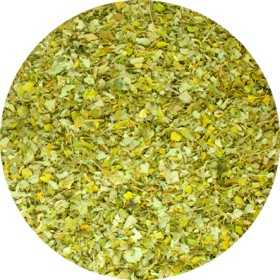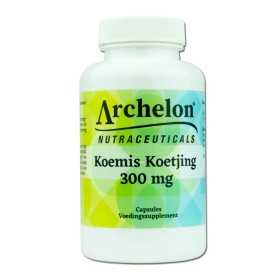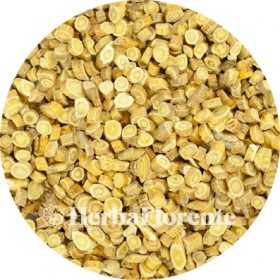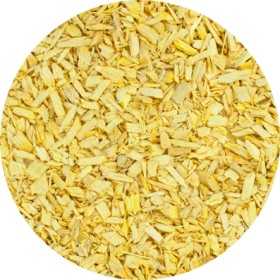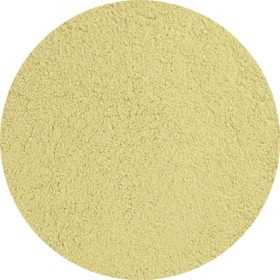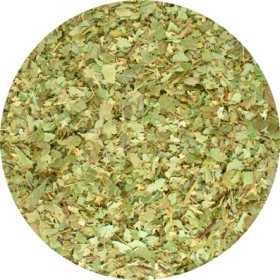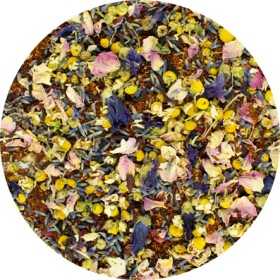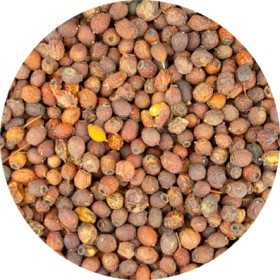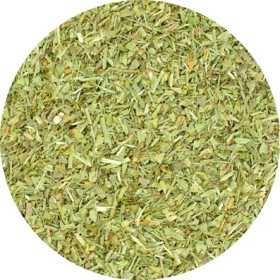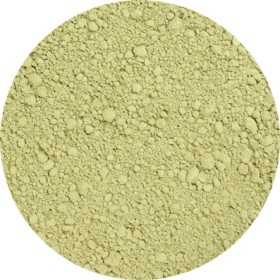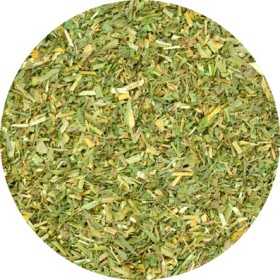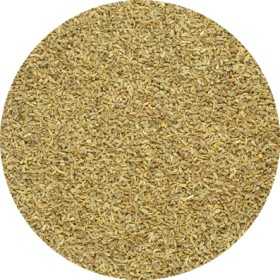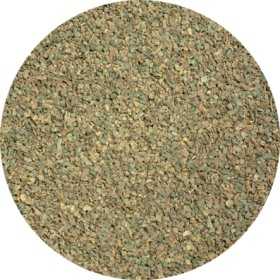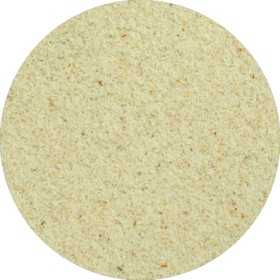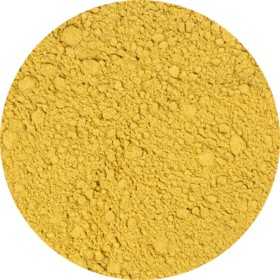Best sellers
There are 393 products.
Old Men's Beard - Usnea barbata
Usnea barbata, sometimes also called 'old man's beard', is a genus of lichens belonging to the ascomycetes. They are found in moist forests around the world, where they usually hang from tree branches. In rare cases they are also found on the bottom or on rocks. The genus belongs to the family of Parmeliaceae. Beard mosses are characterized by a shrub-like structure and a central axis from which branches arise. In areas free of air pollution they can grow 10 to 20 cm tall.
€5.50
From: €5.50
Moringa Tree - Moringa oleifera - (Leaf Cut)
Moringa oleifera, also known as the 'tree of life', thrives in Africa and Asia and is known for its rich nutritional value. The tree is a treasure trove of over dozens of nutrients, including as many as 47 antioxidants. With minerals, proteins, vitamins, beta-carotene, amino acids and various phenols in abundance, the leaves of the moringa are the true storehouse of nutritional value.
For centuries, Asian and African cultures have recognized the benefits of moringa oleifera. The tree has become an integral part of their daily diets due to its versatile uses and nutritional value. Due to its abundant benefits, moringa oleifera is often affectionately called 'the tree of life'.
For centuries, Asian and African cultures have recognized the benefits of moringa oleifera. The tree has become an integral part of their daily diets due to its versatile uses and nutritional value. Due to its abundant benefits, moringa oleifera is often affectionately called 'the tree of life'.
€2.95
From: €2.95
Feverfew - Tanacetum parthenium
Feverfew, also known as Tanacetum parthenium or "feverfew," is a valuable herb that has been valued in traditional medicine for centuries. This aromatic perennial plant, native to southwestern Europe, has a rich history of supporting women's health, particularly during pregnancy and childbirth. Historically, feverfew was used to induce labor and treat puerperal fever, which explains the origin of its name.
The plant is also known for its antipyretic properties and is still grown in herb gardens for this purpose. One of the most notable uses of feverfew is in the treatment of migraines.
The plant is also known for its antipyretic properties and is still grown in herb gardens for this purpose. One of the most notable uses of feverfew is in the treatment of migraines.
€2.95
From: €2.95
Cat's whiskers - Koemis Koetjing - 300 mg
Cat's whisker (Orthosiphon aristatus), also known as Kumis Kutjing, has played an important role in Ayurvedic medicine for centuries due to its beneficial properties in treating urinary tract infections.
This plant belongs to the Lamiaceae family and thrives mainly in tropical and subtropical regions, preferring locations such as wetlands, along rivers and swamps, especially in Southeast Asia, especially Malaysia and Java. The name "cat's whisker" is derived from the white or lilac flowers with striking, thread-like stamens, sometimes up to 3 cm long.
This plant belongs to the Lamiaceae family and thrives mainly in tropical and subtropical regions, preferring locations such as wetlands, along rivers and swamps, especially in Southeast Asia, especially Malaysia and Java. The name "cat's whisker" is derived from the white or lilac flowers with striking, thread-like stamens, sometimes up to 3 cm long.
€19.95
Astragalus - Astragalus chinensis membranus - Cut
Astragalus, also known as Fleshy Locust (Astragalus membranaceus), is a plant native to Asia. It has been used for 2000 years in traditional Chinese herbal medicine to strengthen the immune system. In addition to this property, astragalus has many other benefits. According to Chinese tradition, it strengthens the life force, or 'qi', as it is called in China, when ingested. It is known as a powerful antioxidant and is especially valued for its ability to support the immune system.
€2.60
From: €2.60
Fenugreek - Foenugraeci graecum - Whole
Fenugreek (Trigonella foenum-graecum), also known as fenugreek, boxhorn trefoil or Greek hay, is known for its various health benefits. It can help stimulate appetite, support the immune system and promote fat metabolism.
This versatile plant is mainly used as a spice in Indian cuisine. The aromatic leaves of fenugreek are also used to mask the bitter taste of medicines. Originally from the Mediterranean region, fenugreek later gained popularity in Asia.
Fenugreek is rich in essential minerals such as iron and copper. In addition, it contains saponins and coumarins, where coumarins are known for their pleasant hay-like scent.
This versatile plant is mainly used as a spice in Indian cuisine. The aromatic leaves of fenugreek are also used to mask the bitter taste of medicines. Originally from the Mediterranean region, fenugreek later gained popularity in Asia.
Fenugreek is rich in essential minerals such as iron and copper. In addition, it contains saponins and coumarins, where coumarins are known for their pleasant hay-like scent.
€1.95
From: €1.95
Quassia - Quassiae - Cut
Quassia, known in Surinamese as kwasibita, is the heartwood of the Quassia amara, a plant species from the Quassia genus within the Tree of Heaven family. This South American plant is often planted in the tropics for its use as a remedy for malaria.
Quassia amara is a small, evergreen shrub found in tropical South America, particularly the Guianas, northern Brazil and Venezuela. The plant grows in the understory of the rainforest and its striking red flowers are pollinated by hummingbirds. Because of these beautiful flowers, the plant is also often planted for decorative purposes.
Quassia amara is a small, evergreen shrub found in tropical South America, particularly the Guianas, northern Brazil and Venezuela. The plant grows in the understory of the rainforest and its striking red flowers are pollinated by hummingbirds. Because of these beautiful flowers, the plant is also often planted for decorative purposes.
€2.40
From: €2.40
Ashwagandha - Withania somnifera
In Ayurvedic medicine, ashwagandha is known as a 'rasayana', meaning it is used to support both physical and mental health. It has a calming effect and is used to sleep better and promote a balanced mind. In India, where this herb originates, it is believed to support male potency and female health, often compared to the strength and vitality of a horse.
€4.40
From: €4.40
Plantain Broadleaf - Plantaginis major
The Plantain Broadleaf (Plantago major) is a plant belonging to the plantain family (Plantaginaceae) and varies in size from 10 to 50 cm. It forms a dense leaf rosette that is resistant to foot traffic, which is why it is often considered a weed. This plant species is common in gardens, along roads and paths, and is sometimes derisively called the "white man's footprint". Nevertheless, there is a cultivated variety known as Plantago major 'Rosularis'.
€2.00
From: €2.00
Ginseng (Panax) - Ginseng Panax - Cut
Panax Ginseng is a plant with a slow-growing, sturdy root. Panax Ginseng is considered one of the most important medicinal herbs in traditional Chinese medicine. In fact, it is even the world's most famous herb. Panax ginseng has been used for more than 5,000 years to optimize human health and well-being in Asia. In the world of Chinese ethnopharmacology, it has been used for more than 3,000 years.
Panax takes its name from the Greek word “panacea”, which means “all-healer”. Gingsen is currently the world's most popular and most powerful adaptogenic herb. Adaptogenic herbs help the body to deal with stress in a natural way and achieve a homeostatic balance between body and mind.
Panax takes its name from the Greek word “panacea”, which means “all-healer”. Gingsen is currently the world's most popular and most powerful adaptogenic herb. Adaptogenic herbs help the body to deal with stress in a natural way and achieve a homeostatic balance between body and mind.
€16.00
From: €16.00
Birch - Betula pendula Roth, Betulae (Leaf Cut)
The Birch (Betula) has been valued for centuries for its beneficial properties, thanks to the presence of bioactive substances. In the past, it was even considered a sacred tree. In the spring, just before the tree starts to leaf out, birch sap is tapped because the sap flow is strongest then. This sap is full of phytonutrients, minerals and vitamins. The young leaves are then collected, because they also contain a high content of various beneficial substances during this period.
Birch leaf is rich in flavonoids, saponins and tannins. The saponins and tannins are responsible for the diuretic properties of the birch.
Birch leaf is rich in flavonoids, saponins and tannins. The saponins and tannins are responsible for the diuretic properties of the birch.
€2.10
From: €2.10
Flowers Herbal Tea
Herbal tea composed of various herbs
Nice for a floral moment
Nice for a floral moment
€3.95
Hawthorn berry - Crataegus monogyna (Crataegus oxycantha)
The hawthorn (Crataegus) is a natural source of beneficial substances. The flowers, leaves and to a lesser extent the berries of the hawthorn contain a rich variety of components, including flavonoids, procyanidins, vitamin C, tannins, glycosides and antioxidants. These substances have beneficial effects on the heart and contribute to a healthy lifestyle. Hawthorn is known for its calming properties and supports natural, deep sleep.
€2.00
From: €2.00
Shepherds Purse - Capsella Bursa postoris
The shepherd's purse (Capsella bursa-pastoris) belongs to the cruciferous family (Brassicaceae).
It is an upright plant that can grow between 5 and 60 cm high, and is annual or biennial in nature. Shepherd's purse is winter hardy and usually has a lignified taproot. The sinuously toothed leaves form a rosette around the spindle-shaped root.
The plant is processed into various commercial products. In folk medicine, infusions are used against bleeding and inflammation of the urinary tract, and as a compress on open bleeding wounds. In addition, young rosette leaves can be used in salads or braised in soups.
It is an upright plant that can grow between 5 and 60 cm high, and is annual or biennial in nature. Shepherd's purse is winter hardy and usually has a lignified taproot. The sinuously toothed leaves form a rosette around the spindle-shaped root.
The plant is processed into various commercial products. In folk medicine, infusions are used against bleeding and inflammation of the urinary tract, and as a compress on open bleeding wounds. In addition, young rosette leaves can be used in salads or braised in soups.
€2.00
From: €2.00
Pine (Needles) - Pinus silvestris
The Scots pine (Pinus sylvestris) belongs to the pine family (Pinaceae) and can reach a respectable age of 200 to 300 years, thanks to its rich resin content.
In phytotherapy, the needles and buds of the Scots pine are used because of their content of tannins, flavonoids and vitamins. The oleoresin of this tree is rich in turpentine. This species is known for its abundant monoterpenes, such as α-pinene, β-pinene and limonene, which form an essential oil with expectorant, antiseptic, decongestant, venolymphatic and anti-inflammatory properties.
In phytotherapy, the needles and buds of the Scots pine are used because of their content of tannins, flavonoids and vitamins. The oleoresin of this tree is rich in turpentine. This species is known for its abundant monoterpenes, such as α-pinene, β-pinene and limonene, which form an essential oil with expectorant, antiseptic, decongestant, venolymphatic and anti-inflammatory properties.
€2.00
From: €2.00
Joints Herbal Tea
Herbal tea composed of various herbs
Support for the joints
Support for the joints
€3.95
Algae (Clubweed) - Ascophyllum nodosum
Ascophyllum nodosum, better known as clubweed, is a type of brown algae characterized by the presence of small blisters with slimy contents on the stems, in which the reproductive organs are located. These stems also contain large, gas-filled tubercles that help the plant stand upright under water. Knotweed varies in color from olive green to golden brown. The thallus can reach a length of 30 to 60 cm and is flexible, so that it can sway with the powerful movements of the water.
€2.00
From: €2.00
Alfalfa - Medicago sativa
Lucerne (Medicago sativa), also known as alfalfa, is a perennial plant that can live between five and twelve years, depending on the variety and climate. With a height of up to one meter and clusters of small purple flowers, the plant resembles clover. The plant has a deep and powerful root system that can extend up to 4.5 meters.
Lucerne is native to Europe and is grown worldwide as animal feed. In the Netherlands, alfalfa is mainly dried artificially for the production of protein-rich animal feed.
Lucerne is native to Europe and is grown worldwide as animal feed. In the Netherlands, alfalfa is mainly dried artificially for the production of protein-rich animal feed.
€2.00
From: €2.00
Anise - Pimpinella anisum
Anise seed has a naturally sweet, warm taste reminiscent of licorice. It is a versatile seasoning that can be used in both sweet and savory dishes. All over the world, anise seed is used in confectionery, and it is also often added to liqueurs, such as Ouzo.
You can add anise seeds to bread, pastries, cookies, fruit and gingerbread. In Indian cuisine, anise is indispensable in curries and fish dishes, and it gives a delicious flavor to vegetables such as pumpkin and carrot. In the Netherlands it is a tradition to use anise seed on rusk with mice at birth.
Anise seed tea can help with a feeling of heaviness after meals, because it has a soothing and relaxing effect.
You can add anise seeds to bread, pastries, cookies, fruit and gingerbread. In Indian cuisine, anise is indispensable in curries and fish dishes, and it gives a delicious flavor to vegetables such as pumpkin and carrot. In the Netherlands it is a tradition to use anise seed on rusk with mice at birth.
Anise seed tea can help with a feeling of heaviness after meals, because it has a soothing and relaxing effect.
€2.95
From: €2.95
Blackcurrant - Ribes nigrum
The Latin name for blackcurrant is Ribes nigrum L. 'Nigrum' refers to the dark color and 'ribes' to the berries themselves. Various parts of the blackcurrant plant are attributed with different health benefits. The berries, seeds and leaves exhibit unique properties. For example, blackcurrant leaves are used to maintain healthy cartilage and to keep the joints flexible.
€2.95
From: €2.95
ILHWA GINST15 Korean Red Ginseng Extract
To this Ginseng extract is GINST15 added. This fermented ginseng extract has the unique property that it is absorbed 15x times better and 4x times faster in the human body. Regular ginseng extract takes 12 hours to get maximum absorption while GINST15 extract will get maximum absorption in 3 to 4 hours.
Panax Ginseng is a plant with a slow-growing, sturdy root. Panax Ginseng is considered one of the most important medicinal herbs in traditional Chinese medicine. In fact, it is even the world's most famous herb. Panax ginseng has been used for more than 5,000 years to optimize human health and well-being in Asia. In the world of Chinese ethnopharmacology, it has been used for more than 3,000 years.
Panax Ginseng is a plant with a slow-growing, sturdy root. Panax Ginseng is considered one of the most important medicinal herbs in traditional Chinese medicine. In fact, it is even the world's most famous herb. Panax ginseng has been used for more than 5,000 years to optimize human health and well-being in Asia. In the world of Chinese ethnopharmacology, it has been used for more than 3,000 years.
€61.46
€81.95
From: €61.46
Bladderwrack Fine - Fucus vesiculosus
Bladderwrack (Fucus vesiculosus) is a type of brown algae belonging to the genus Fucus. It thrives along the northern coasts of the Atlantic and Pacific Oceans, and in the North Sea and Baltic Sea, often found in kelp forests. This seaweed is characterized by air bladders that serve as a floating organ, although there are also variants without these bladders.
Like other brown algae, bladderwrack is rich in a specific class of polyphenols called phlorotannins, which possess powerful antioxidant properties. In addition, these phlorotannins have antibiotic, antifungal and anti-inflammatory properties.
Like other brown algae, bladderwrack is rich in a specific class of polyphenols called phlorotannins, which possess powerful antioxidant properties. In addition, these phlorotannins have antibiotic, antifungal and anti-inflammatory properties.
€2.50
From: €2.50
Psyllium husks (Premium Psyllium Fiber) - Psylli flavum Testa
Psyllium husks, derived from Plantago psyllium, are a blend of partially soluble and fermentable fibers that are much appreciated by people looking to promote their gut health. They are a valuable addition to your daily fiber intake, but it is crucial to drink enough water throughout the day for optimal results.
With more than 80% fiber, psyllium seed consists mainly of 70% soluble and 30% insoluble fiber. Once psyllium comes into contact with water, it forms a gel that can absorb up to ten times its own weight in water. This increases the amount of fluid in the intestines, making stools softer, but don't forget to drink enough water!
With more than 80% fiber, psyllium seed consists mainly of 70% soluble and 30% insoluble fiber. Once psyllium comes into contact with water, it forms a gel that can absorb up to ten times its own weight in water. This increases the amount of fluid in the intestines, making stools softer, but don't forget to drink enough water!
€2.80
From: €2.80
Ginger - Zingiberis Thiz. Mund. officinalis
Ginger comes from the root of the ginger plant (Zingiber officinale) and is used as a spice in many countries because of its strong flavor. It contains various bioactive substances, including gingerol, shogaol and zingiberene. Ginger supports the immune system, promotes healthy digestion and has a beneficial effect on the heart and blood vessels. Additionally, ginger can promote well-being during vehicle travel.
€2.40
From: €2.40
















